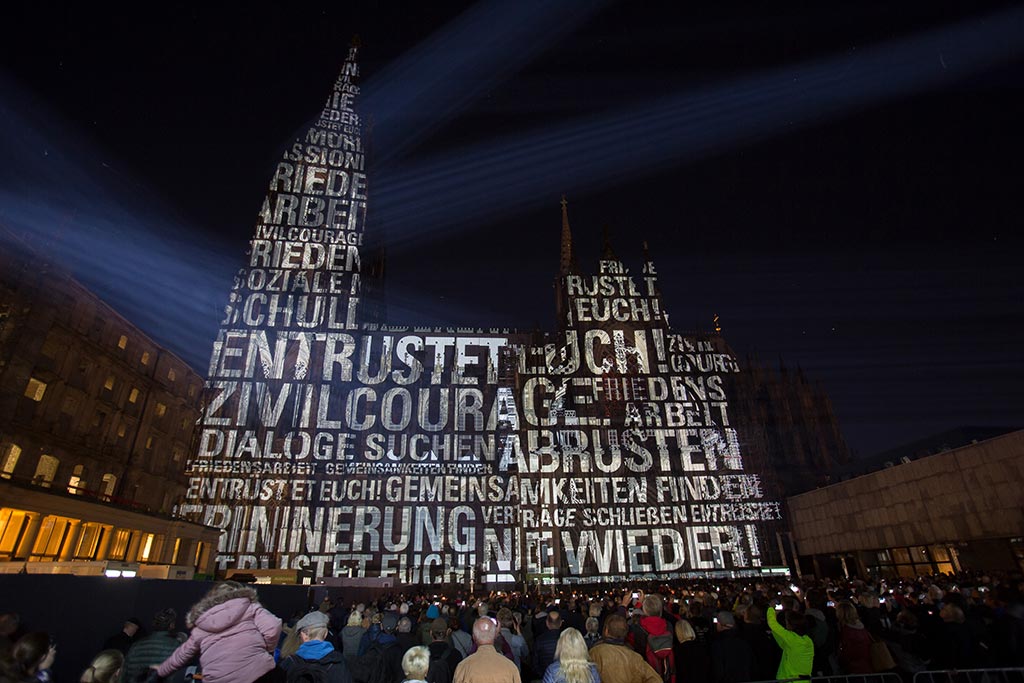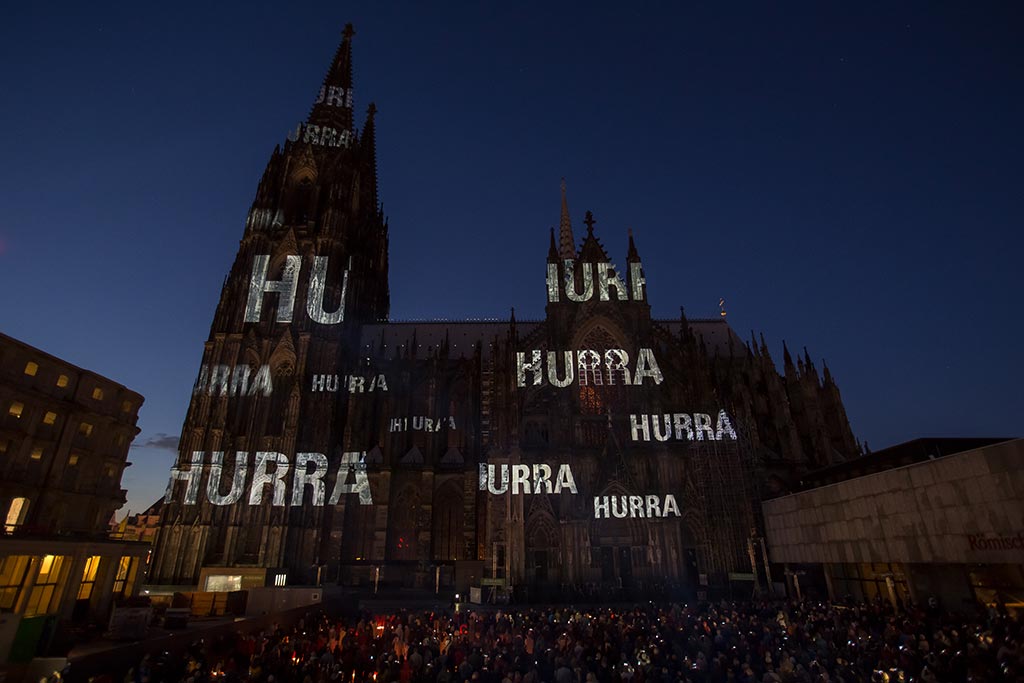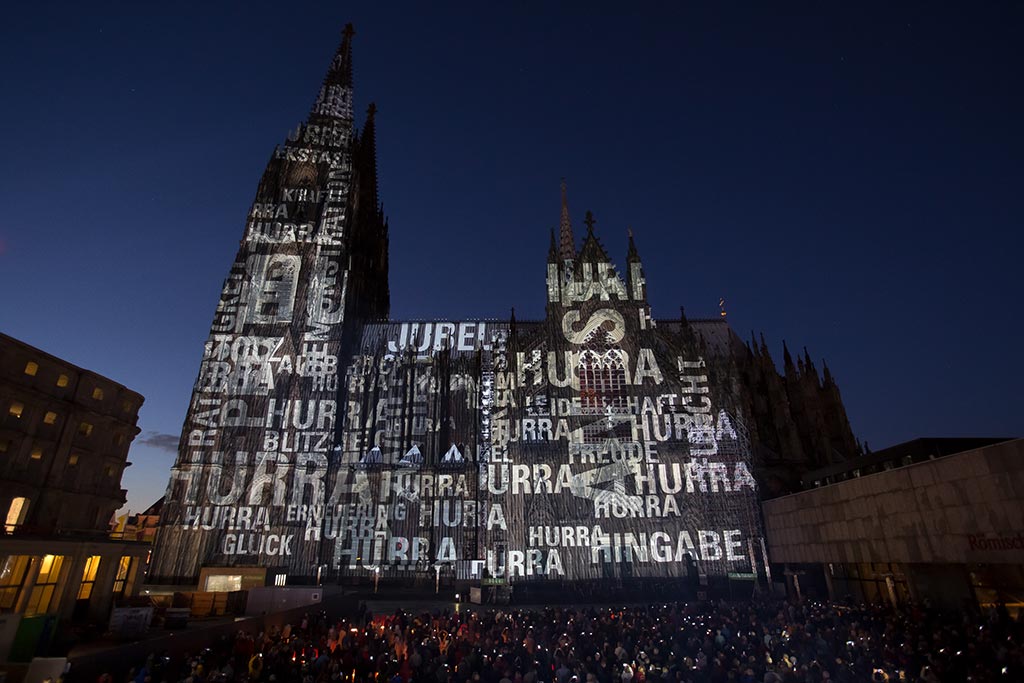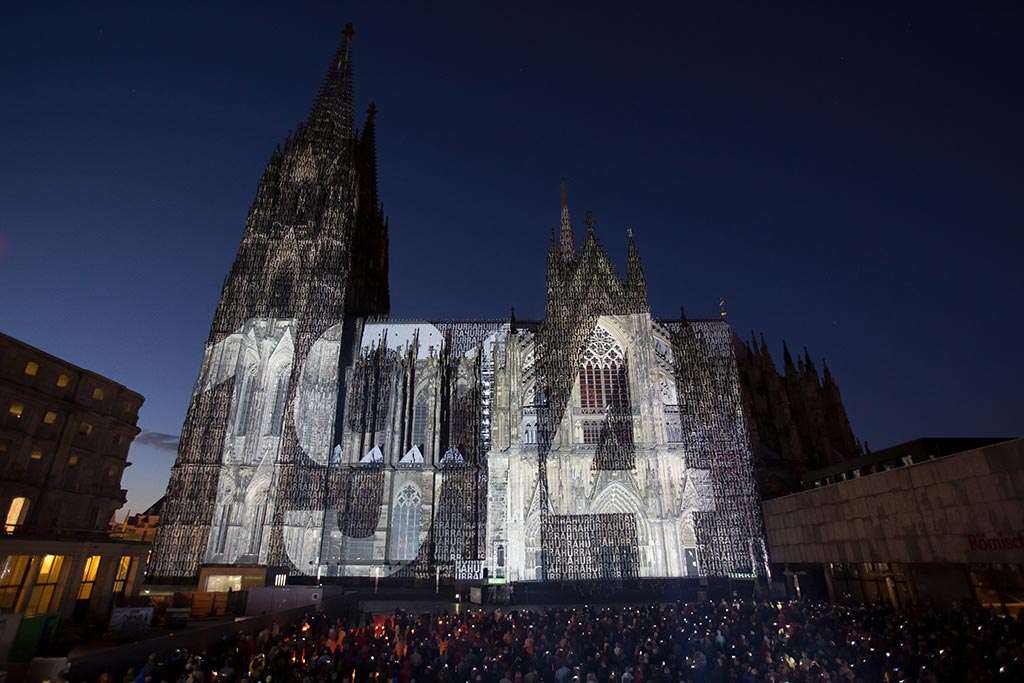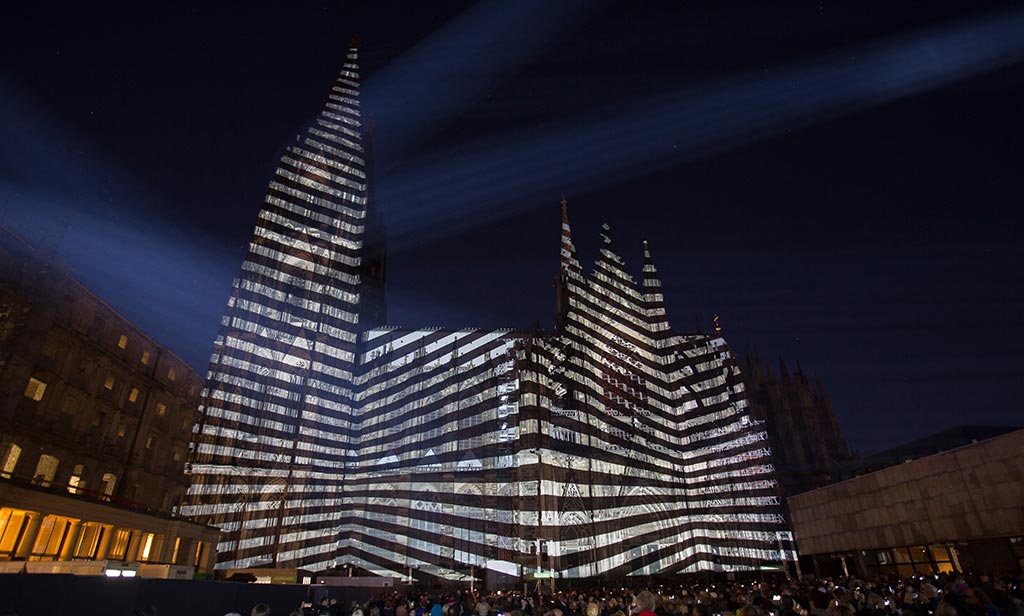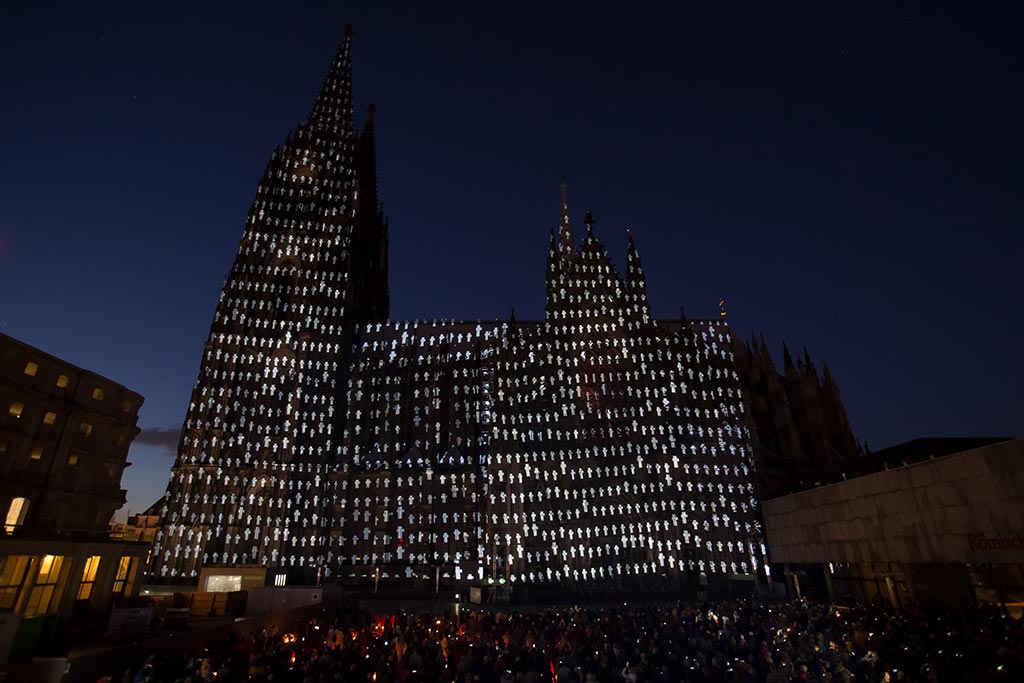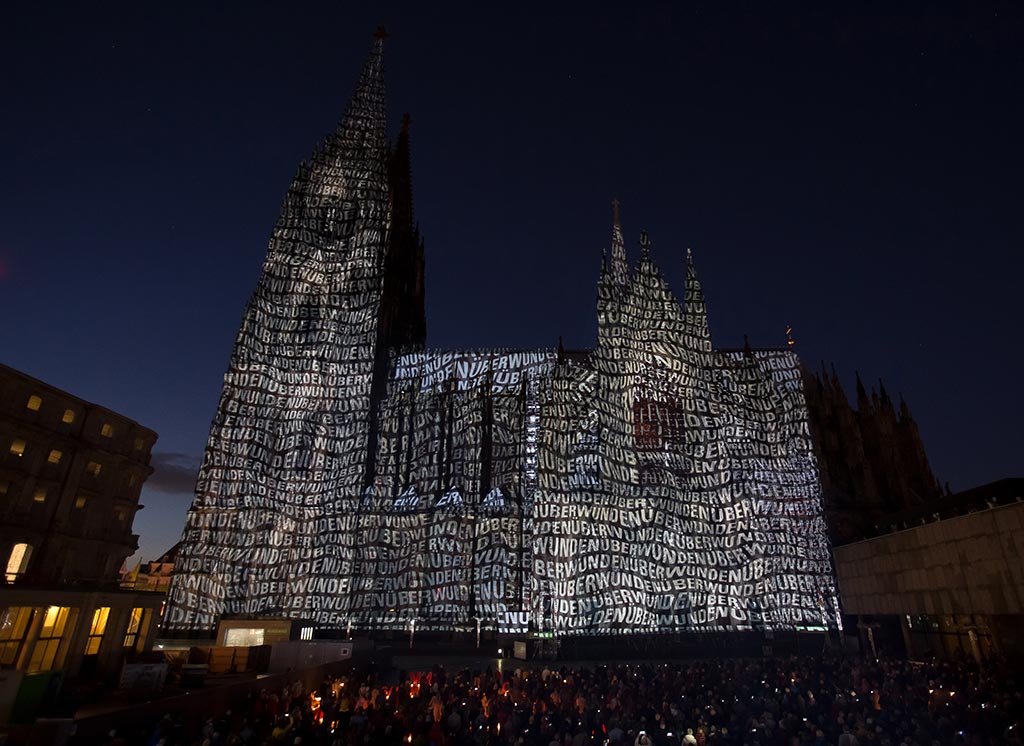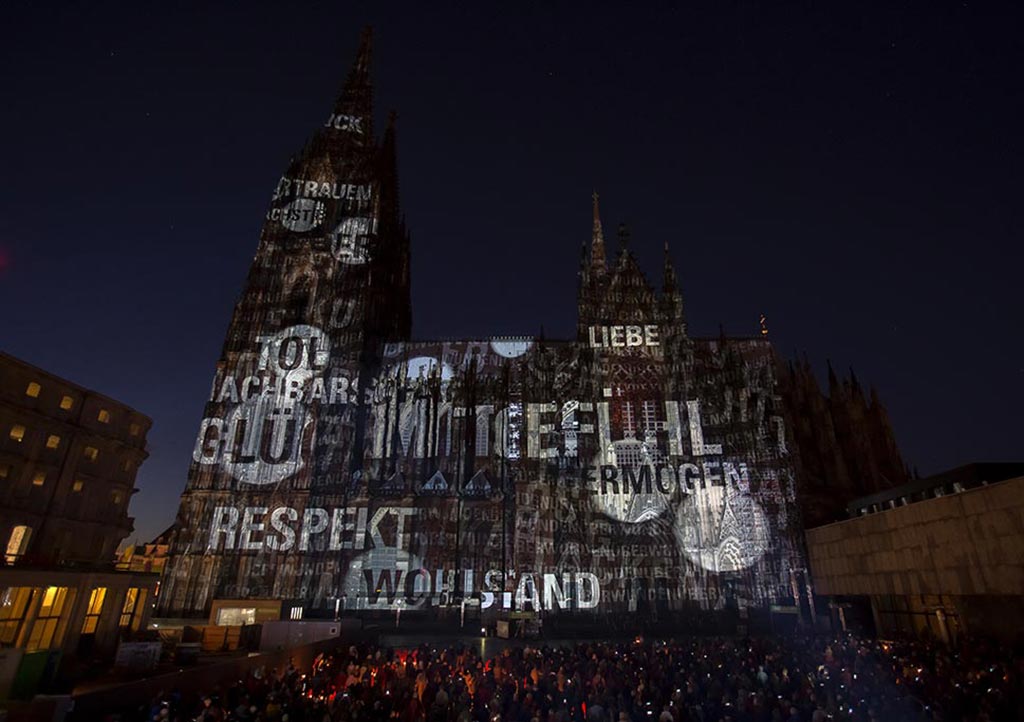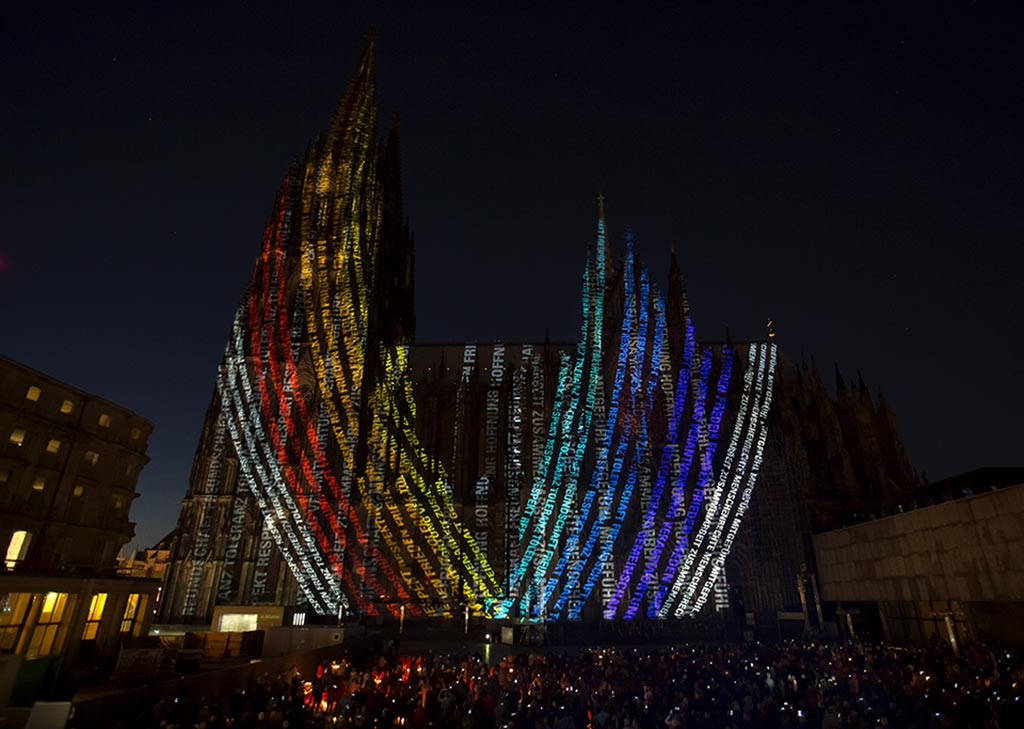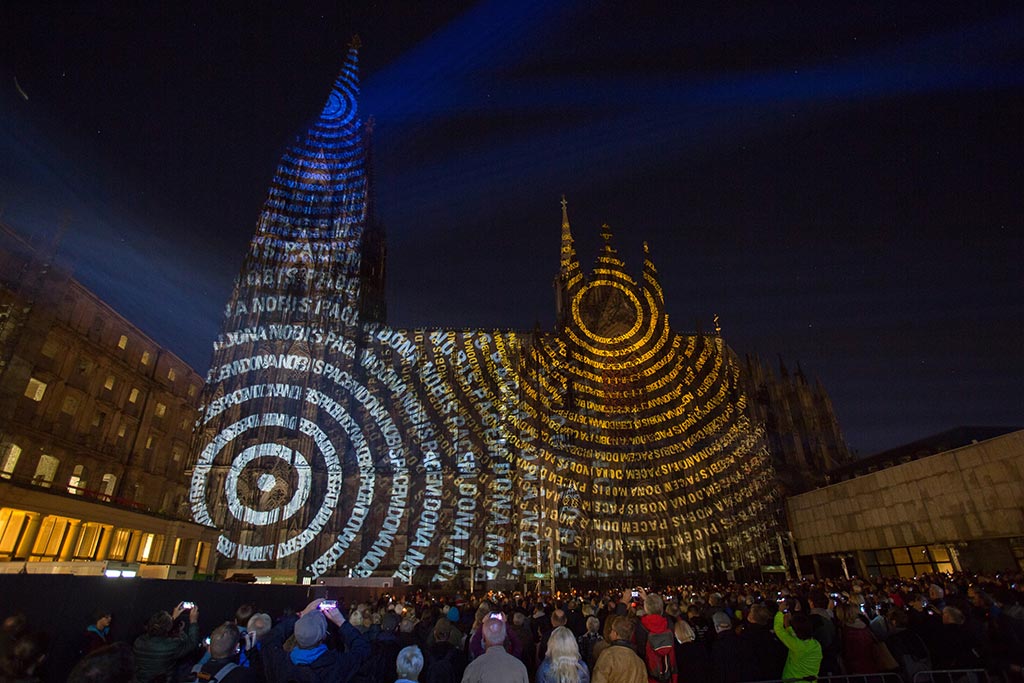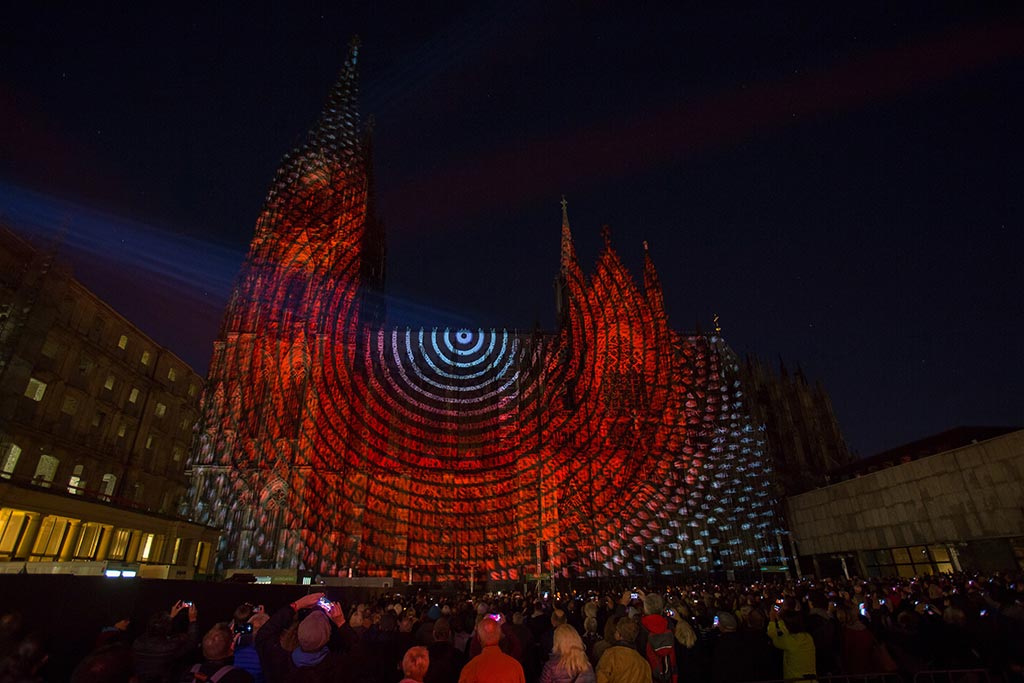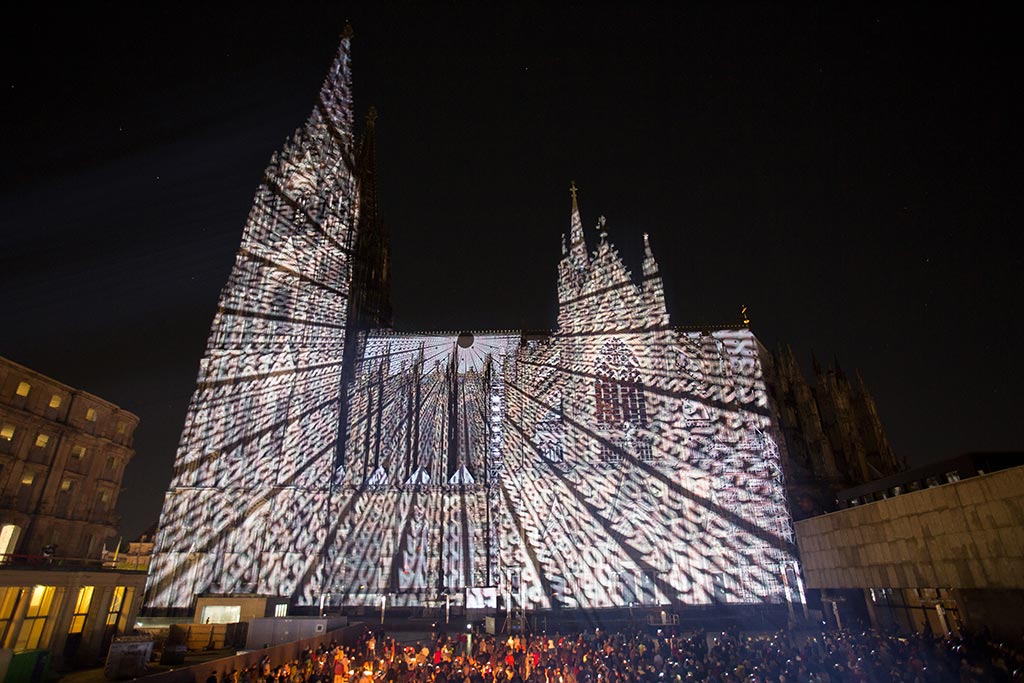DONA NOBIS PACEM
Commemoration of End of WW1, Cologne Cathedral, South Facade, Cologne
The work DONA NOBIS PACEM was created for the Cologne Cathedral. No other building would be better suited to this request for peace. It represents for more than eight hundred years of human history in war and peace and on its façade, the traces of this eventful history can be read. The Cathedral symbolically represents an ideal that may never be perfect, but which must be constantly worked on in order not to lose it.
Its surface is dark and weathered, with occasional brighter new sections and its gothic architecture is so full of incisions, breaks and offsets that it is impossible to imagine on daytime to project on it in the night.
But the porous, rough stone catches the light and sends it back as if it is shining from the inside. The architecture scrutinizes the words, dismantles and destroys them and put them back together.
A picture is worth a thousand words? The form and content of the terms face each other congruently at once.
The 15–minute text animation DONA NOBIS PACEM is a typographically structured collection of connotative terms structured in three sections. The first section recalls WW1 and its end 100 years ago.
The first word that moves ascending the cathedral is the word HURRA, followed by many more hurrays and expressions of enthusiasm. In 1914, the beginning of the WW1 was euphorically welcomed by many people. Quickly, the joy screams turn into cries of pain.
Between the splinters of the exploding year appear the names of the battlefields and theaters of war, which are transformed into a kind of dazzle camouflage (1) through close spacing and breaks in texture. This pictorially stands for the “tracks” of the war: the labyrinthine trenches, the changing front lines, the breaks and destructions. PEOPLE become MATERIAL and the war industry is constantly developing new, more effective weapons of mass destruction (WARSHIPS, TANKS, FLAMETHROWER, POISON GAS ...)
HOME and FRONT become synonyms. The war takes possession of the hometowns. Cologne becomes “front town”. The armament industry settles, it rules CARNIVAL BAN. From here the soldiers drive to the front. Trenches cover the land.
When it dissolves is not a word to read, but only the repetitive letter t, grave fields of crosses for each dead, soldiers and civilians, torn by grenades, pierced with bayonets, stifled in poison gas or carried away by disease (SPANISH FLU). Instead of language, this original catastrophe of the 20th century leaves only stark, cold numbers of casualties.
A total of about 20 million deaths around the world and just as many injured. The year 1918 collapses.
The second sequence, as long as the first, is dedicated to the search and the struggle for peace, but begins with an inventory. From the rubble of the year 1918 GIVEN, LOSS, WOUNDS, DEATH ... appear.
It gurgles and seethes. In the interplay between WOUNDSOVERCOME, EXISTENCE, INJURY and DESPERTION appear in the foreground.
On this moving organic surface peace terms appear briefly and disappear again in the thicket of letters and words. The struggle for peace is also a struggle of language in the struggle of opposites and it's a Sisyphus – work. CIVIL COURAGE, HUMAN RIGHTS and EQUALITY want to be worked out again and again.
Then there are bright spots. Circling spots under the surface of the façade discover COMPASSION, RESPECT, TOLERANCE .... and describe and quote the Cathedral as a lighthouse of CHARITY.
The initially loosely assembled terms of communal, peaceful coexistence sink to the ground and form themselves at the base of the dome into an ascending, sustainable text block. Arrived at the peak of the Cathedral, it begins to bulge convexly and dissolve into three–line arches.
Here end the first two sequences together with about eleven minutes in length. They are lined with extracts from “dies irae”, the third part of the Requiem in C– minor by Luigi Cherubini 1815 in a recording of Cologne Domchor headed by Professor Eberhard Metternich.
The third and final sequence is the &ldquo:dona nobis pacem”. from the B minor Mass of Johann Sebastian Bach, BWV 232 in a recording of the Figural Choir Cologne under the direction of Archdiocesan Music Director Richard Mailänder.
This sequence stands for the desire for a divine, ideal, inner and outer peace and is at the same time a reference to the Cologne Cathedral and its relationship to the population of Cologne.
The vaulted lines with the concepts of peace form into arches, bridges and viable columns. Colors are emerging. The symbol of the rainbow is associated.
The arc segments open like a flower (or open hands) and make room for concentric nested circles. To read is the text: DONA NOBIS PACEM (Give Us Peace), the only coherent sentence in the entire text animation. Intense colors move concentrically inside the text circles. A self-reliance, a remembrance of injustice and suffering, MEMORIA PASSIONIS in search of inner peace.
From a cycle of cycles, three, with waves in and out, as if you throw pebbles into the water and spread the message of the touch of the water surface everywhere. The plea for peace multiplies in the Christian symbolism of the number three. Finally, all the sources of the circle reunite to form a single one whose movement now leads from the inside to the outside and ends in a radiant corona. The final sequence, marked with the colors red and white, hugs the city of Cologne, its inhabitants and visitors and includes them in this wish, this plea for peace.
